

Grooming a Puli is not as hard as it seems. And it's not such a big job. A lot of dogbreeds need a lot more work with a more complex care. The Puli needs a very specific way of grooming, but if you know how it's done, it's not so tough.
The best thing to do when describing the care is to divide it into three stages. The care of the puppy, after that the state of transition when the cords form and are not very long yet, and finaly the grooming of the adult Puli with cords that are very long or even reach the floor.
During each of these stages the grooming is a little different, some processes are only for one stage. We discuss them seperately below.
We assume for this coat care that the coat is good. This means the mixture of under- and uppercoat is right (more about this, see the FAQ's). Coats with too much or too little undercoat are problem cases and we don't discuss these here. Actually we don't have any experience with that, Toby and Terry have a good coat.
We also would like to remark that we both are dog-groomers. Thus we have a lot of practical experience in dog-care. Some of the actions we describe are not as easy as they might seem. It's better to ask help from your Puli-breeder when you're in doubt. Don't mess about with a corded coat, when you do something wrong it might take a long time to be restored.
The care of the puppy.
A Puli-puppy doesn't need a lot of coat care. The felting process is not started and the hairs are not yet long.
This doesn't mean though that we don't have to do anything at all. Later the dog will need to be groomed so it's necessary your pup gets used to it now. Place your little doggy on a table (or another place were you intend to groom your dog) and pretend you're grooming him. Fumble the coat from head to toe. Especially the (fore)legs and tail can be 'problem areas' for adult dogs. Learn the dog that he sometimes needs to be checked inside his mouth, for example to look at his teeth. He also needs to lie on his back for a while. All these situations will occur in later grooming sessions, but also when visiting the vet. The better the dog is used to these situations, the less he'll care about it.
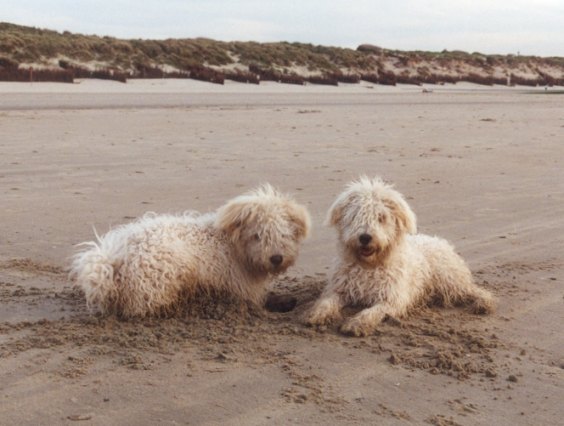
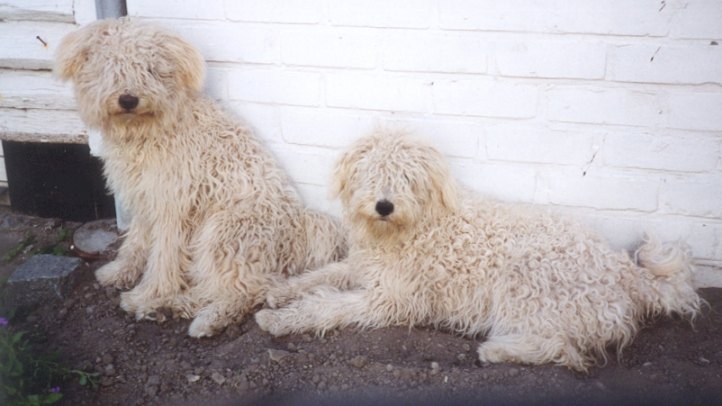
Check the ears from timle to time. There might be hairs growing in the ears. These may be pulled out. They stop the inside from being well ventilated (this is allready uneasy with the hanging ears) and that is the ideal condition for earmite. When a dog is infected with this parasite sometimes the ear feels hot or the dog might shake his head. There can be inflammation of the ear. Whenever there's doubt, contact your vet.
It's best to use a protection agains fleas and ticks from the start. Talk about it with the vet. Fleas can ruin a feltcoat over night. When it's too bad, the whole coat needs to be shaved and it will take ages to be restored again! A tick can spread the Lyme-dissease. Without getting deep into the subject, be sure you don't want this. And by the way, one tick filled with blood can produce 1.000 eggs!
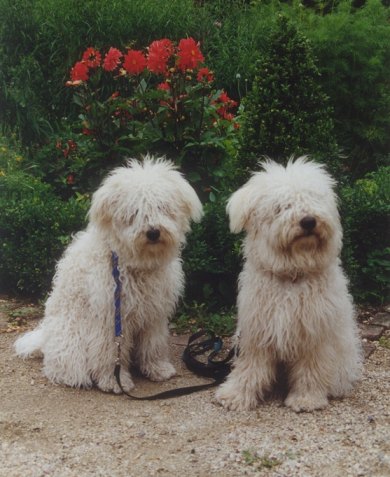
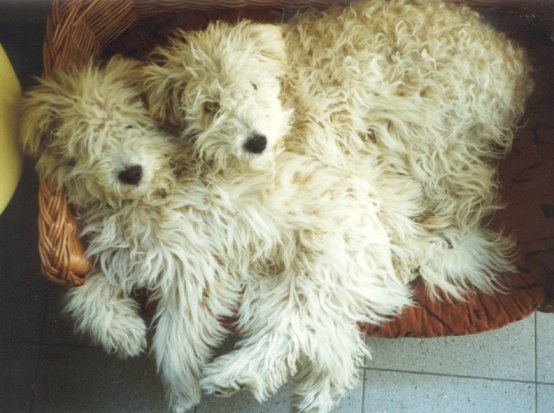
When the dog spends a lot of time in the garden (without hard surface) and/or isn't taken for a walk a lot, the nails will get too long. You'll have to pare them yourselves, or let somebody who knows how to do this do it for you. Take care not to cut the bloodvessel in the nail. This will hurt and paring the nails in the future will only get harder.
If your dog doesn't get dirty it's not necessary to wash him at this age. Just take care that no dirt gets stuck in the coat. Things like blades of grass, twigs or other vegitation traps easily in the coat. Get used to removing these things regulary. When the felting progress starts these bits will get into the cords. It won't be possible to get them out without damaging the cord.

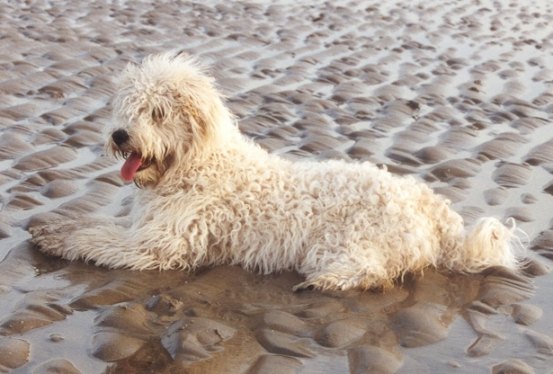
As the pup gets older, the hairs will stick more and more together in a 'flossy' kind of way. Don't brush this, it's the beginning of the cords. Check especialy under the ears and tail as these are the places where the cords are formed easier.
The state of transition.
When the dog is about eight to ten months old, the felting process starts. The 'flossy' hairs, as mentioned above, get a more solid structure and get longer. The first real cords arise.
It is very important to separate the cords down to the skin again and again. Take two cords between the fingers and pull them apart until the skin is visible. Don't pull to hard as this can damage the skin. Be very carefull for the ears as they tear easily. This will hurt the dog so the next time you want to groom him he won't be very enthousiastic.
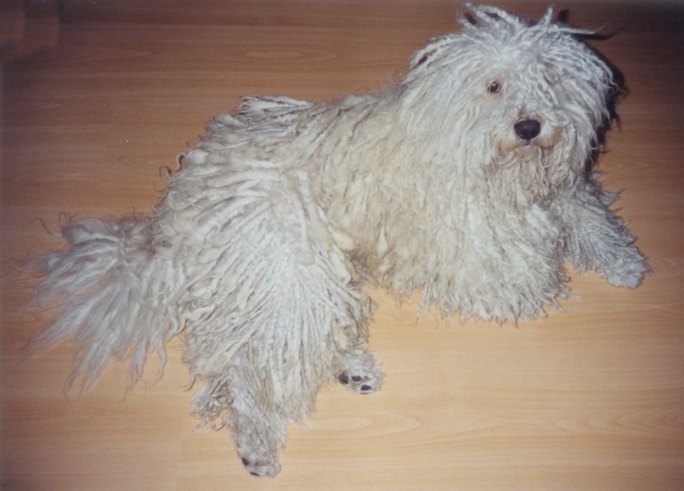
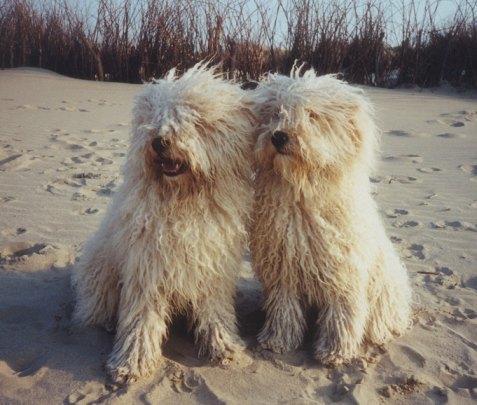
Cords that are too thick can be separated into two thinner cords. When the structure is not too firmly it is possible to start against the skin. Try to split the cord in two and then tear further to the end side. When this is not possible start at the top and tear unto the skin.
Caution: cords can be made thinner by tearing them, but not thicker. So be very convinced that the cord is too thick before starting to separate. It may be a better idea to wait a little until the rest of the coat is well judged. Separating cords can be done at a later date.
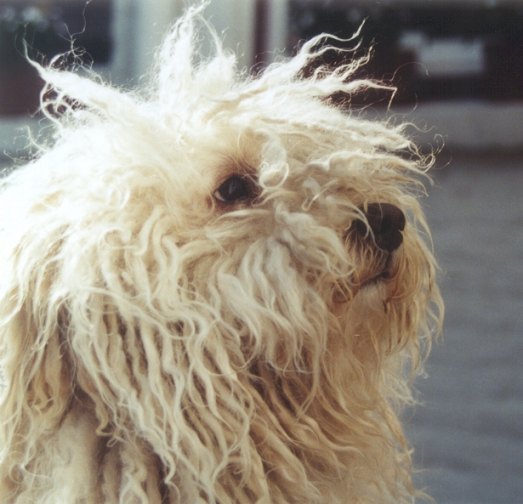
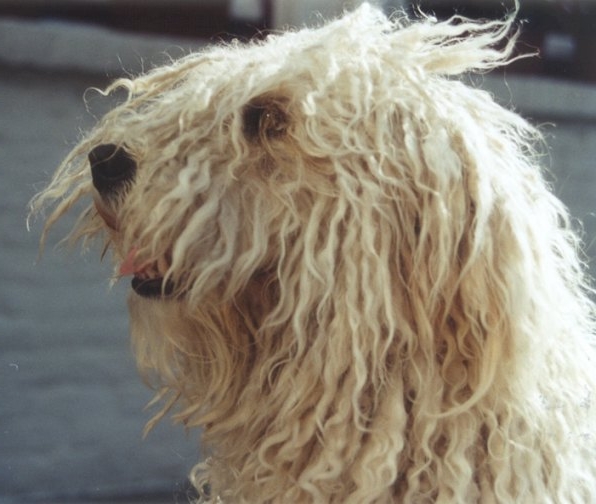
When Toby and Terry reached this age we gave them a bath from time to time. We did this about every three months or so. A lot of dog-owners are convinced that a dog should not be washed, but that is not true anymore. A long time ago, when dogs were kept out in a kennel, the situation was completely different. These days most dogs live inside the house and so a regular washing session is necessary. Washing does not damage the coat if a good dog-shampoo is used. The natural water-repellent effect of the coat is restored after only a few days.
Now it's also necessary to regulary cut the hairs from the feet. When the cords on the feet are too long, the dog steps on it and this is painfull. The hair between the toes can felt and this also hurts. If you want to try to cut it yourself, then look at our 'cutting the feet'-page. When you're in doubt, better let somebody experienced do the job for you.
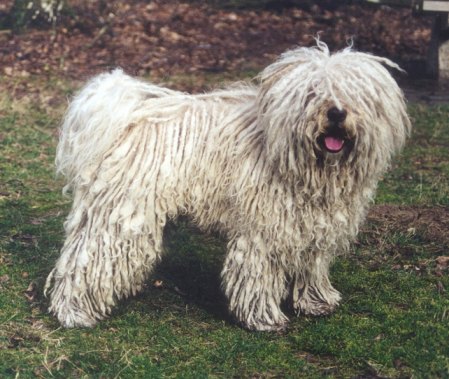
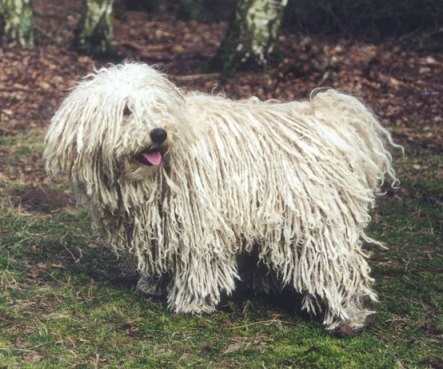
If your Puli is a male one, from this age on you probably will have a lot of trouble with the fact that he lifts his leg to urinate. Everytime he does so his cords get wet, and these absorb the urine. If you do not want this to happen, we got a solution for you on this page.
The adult Puli.
When the dog is about two years his coat probably reaches the floor. The coat is so long that when the dog runs around a lot and is very active, the cords tear 'by themselves'. If you see Toby and Terry on the beach, you'll know what we mean. It's still important though to check the coat regulary, especially on places where the cords tend to stick together in packs, like under the tail and ears and also the short cords on the legs.
We cut all the cords that reach the ground so they are two centimeter above it. Cords that drag on the ground after a rain-shower absorb the moist from the ground. Before you realise it, your dog is wet through and through. The feet are also very important to look after. The more coat reaches the ground, the wetter your Puli will be. So, cut it! Or let it be cut by somebody who's experienced. (Also look at the 'haircut'-page and the 'cutting the feet'-page).
You also still have to look at the ears regulary and make sure the nails don't get too long. If the dog is too dirty are smells you can wash him. Of course it depends on the daily activities of the dog how much this needs to be done. We wash Toby and Terry about every three months. (Bathing).
We also like to notice that except of the Puli there are 5 other corded breeds. These are the Komondor, the Bergamasco, the Perro de Aqua Espanol (Spanish Waterdog), the Corded Poodle (indeed, a Poodle with cords) and also the Havaneze (only permitted with cords in America).
The coatcare of these breeds is not exactly the same as the one used for the Puli. Sometimes there are enormous differences. Only by 'looks' these breeds belong together.
Home FAQ's Beach Agility Travelling Who we are Links
Shows Standard Pedigree Your Pulis Characters Guestbook